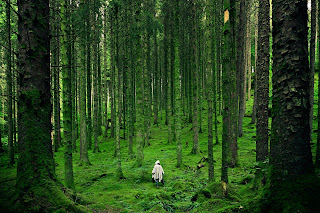ANIMALIA KINGDOM
<script async src="https://pagead2.googlesyndication.com/pagead/js/adsbygoogle.js?client=ca-pub-5632014805880740"
crossorigin="anonymous"></script>
<!-- Global site tag (gtag.js) - Google Analytics --> <script async src="https://www.googletagmanager.com/gtag/js?id=G-KK3RM426QN"></script> <script> window.dataLayer = window.dataLayer || []; function gtag(){dataLayer.push(arguments);} gtag('js', new Date()); gtag('config', 'G-KK3RM426QN'); </script>
google() // Google's Maven repository
classpath 'com.google.gms:google-services:4.3.3'
ADAPTATION IN ANIMAL KINGDOM
I would like to begin by quoting the famous philosopher Heraclitus, who said “the only thing constant is change” 1. We can see this in the animal kingdom, as they adapt to different conditions. They change or evolve to fit in the new environment that is different from the one they were used to. (Peekaboo Kidz, 2021).
What is adaptation? I agree with how Peekaboo Kidz has defined it: “the process of adjusting according to the environment and situation”. This is what we call “adaptation”.
HOW DO ANIMALS ADAPT TO CERTAIN ENVIRONMENTS AND SITUATIONS?
It has been observed that the animal kingdom has three types of adaptation processes, though there might be more. These are: behavioral, structural, and physiological. First, let us look at “behavioral adaptation”. What is behavioral adaptation? It is an adaptation that shapes how organisms act and respond in order to survive and reproduce. If you watch Nat Geo Wild, you might know that bears are very strong and energetic. They have more energy than we can imagine. However, even the mighty bears have to behave in a certain way to cope and survive. For example, during winter, some bears go into hibernation, which is a deep sleep. This depends on snowfall and food availability. This behavior helps them adapt. Apart from bears, some bird species migrate to warmer places when they cannot stand the cold during winter. This kind of behavior is important for all animals. They have to adapt or behave in a certain way to survive. (Peekaboo Kidz, 2021).
Another type of adaptation is “structural adaptation”. This is when the environment shapes the appearance of animals. To survive, they may develop certain body features that help them cope with their surroundings. For example, humans wear warm clothes and drink hot tea when it is cold to keep their body temperature stable. This is also related to how the body works in circulation and respiration. For example, fish have gills that help them breathe in water. Desert foxes have large ears that help them release heat and hunt. On the other hand, Arctic foxes have small ears that help them conserve heat. Did you know that some animals can change their colors, turn white, to reflect heat from the sun and turn black in cold seasons to absorb heat from the sun? (Peekaboo Kidz, 2021).
What we mean is that, in structural adaptation, animals can develop physical parts through evolution that allow them to live, find food, and defend themselves.
The last type of adaptation is “physiological adaptation”. This is “an internal body mechanism of an animal provoked by external stimuli that helps them to survive and reproduce” (Peekaboo Kidz, 2021). We are talking about metabolism and body chemistry that play an important role. Physiological adaptation helps animals to maintain their body balance or homeostasis. This is how living organisms regulate their inner temperature. (Peekaboo Kidz, 2021).
DIFFERENCES BETWEEN HOMOLOGOUS AND ANALOGOUS TRAIT
Have you ever wondered how the bones in a human hand could be similar to those of a cat leg, a whale flapper, or a bat wing? There is an African saying that states that, in this world, we are “two two”. This means that there is another person who looks like me somewhere. How can this be possible? The concept of evolution helps us find answers. (Edgerton and Marshall, 2016).
Let us explore the differences between homologous and analogous traits and how they play an important role in evolution. First, let us review what evolution is. Edgerton and Marshall (2016) state: “Biological evolution can be defined as any change in the inherited traits of a population that occurs from one generation to the next” (“Homologous vs Analogous”, YouTube). It is a change in species that occurs over time. When a population becomes more diverse, new species are formed. (Edgerton and Marshall, 2016).
Natural selection not only drives evolution, but also homologous and analogous traits. What are these homologous traits then? They are traits that two or more species share as a result of having a common ancestor. For instance, the bat and the mouse share a common trait in their forelimbs. They have a similar bone structure. (Edgerton and Marshall, 2016). However, there are some organisms that share traits but not a common ancestor. These are called “analogous traits”. An example is the eye of a human and an octopus. They share a common trait but they do not have a common ancestor. (Edgerton and Marshall, 2016). When species share traits but not a common ancestor, this is known as “convergent evolution”. It happens when species in different places face similar environments that make them share traits. (Edgerton and Marshall, 2016).
On the other hand, divergent evolution is when two or more species have a common ancestor, but evolve into different species. For example, an elephant and a mammoth have a common ancestor, but evolved into different species. Another example is the fox, the wolf, and the dog. They have a common ancestor, but changed or adapted to different environments and evolved into different species. (Mute Classroom, 2017).
Whether animals have a common ancestor or not, they could be affected by both convergent and divergent evolution. It would depend on the kind of environment that influences them.
REFERENCE
Peekaboo Kidz. (2021). Animals Adaptation. [Video]. YouTube. https://youtu.be/n3OWsRFtTeI
Edgerton, E. & Marshall, M. (2016). Homologous versus Analogous. [Video].
YouTube. https://youtu.be/dXEBCa4OHV4
Mute Classroom. (2017). Convergent evolution vs Divergent evolution. [Video].
YouTube. https://youtu.be/X-XtZyHcck4
.jpeg)
.jpeg)
.jpeg)

Comments